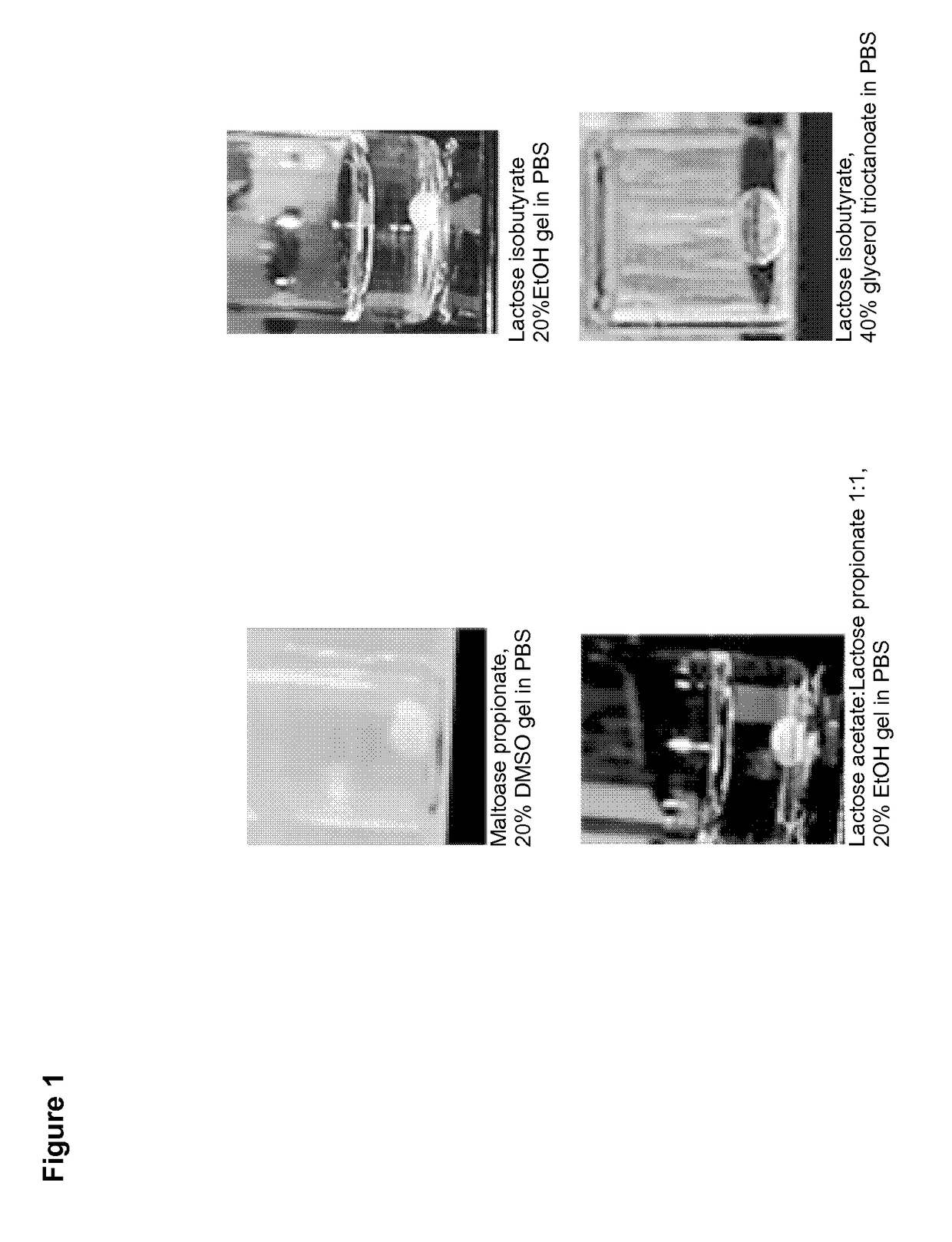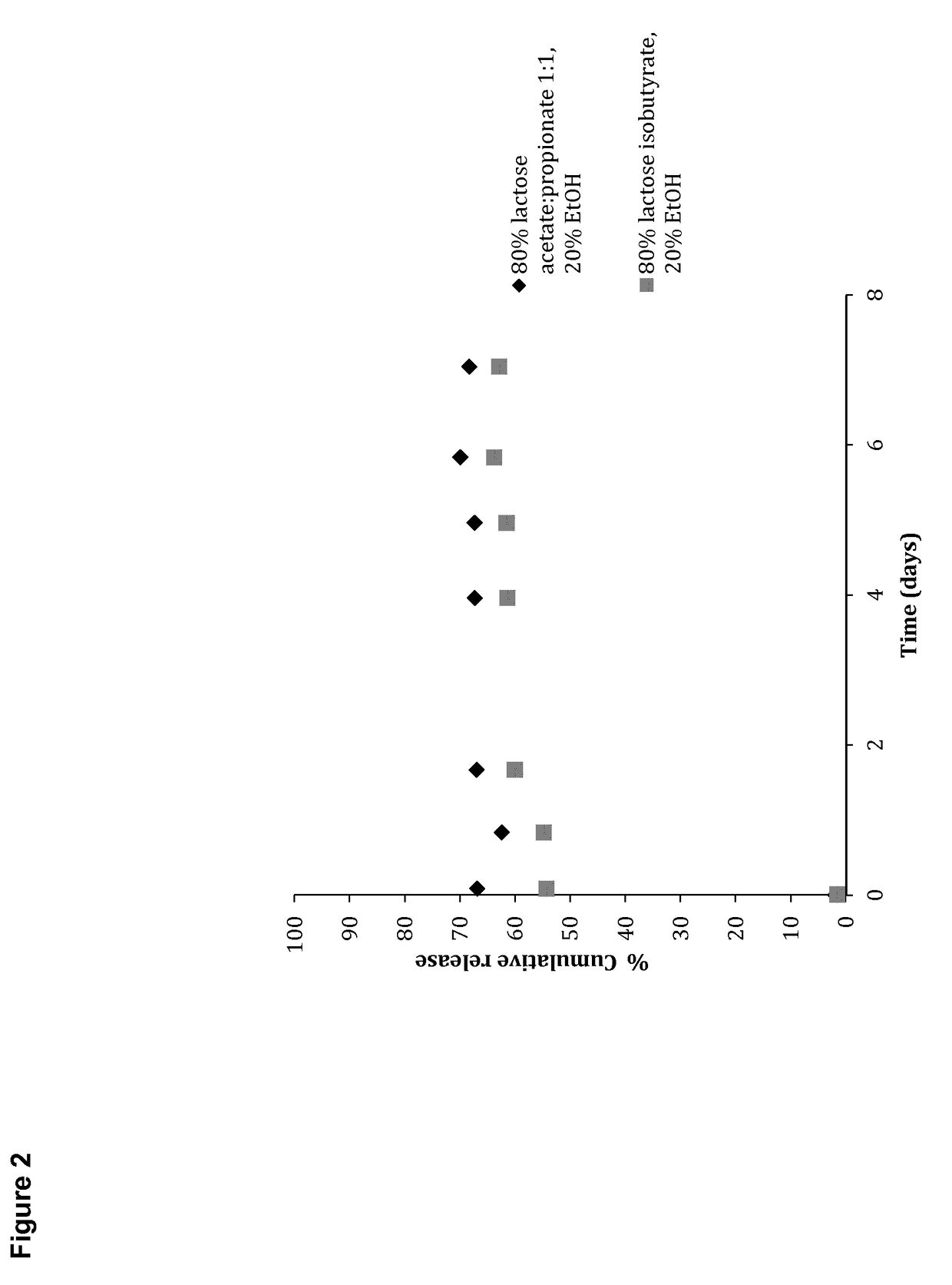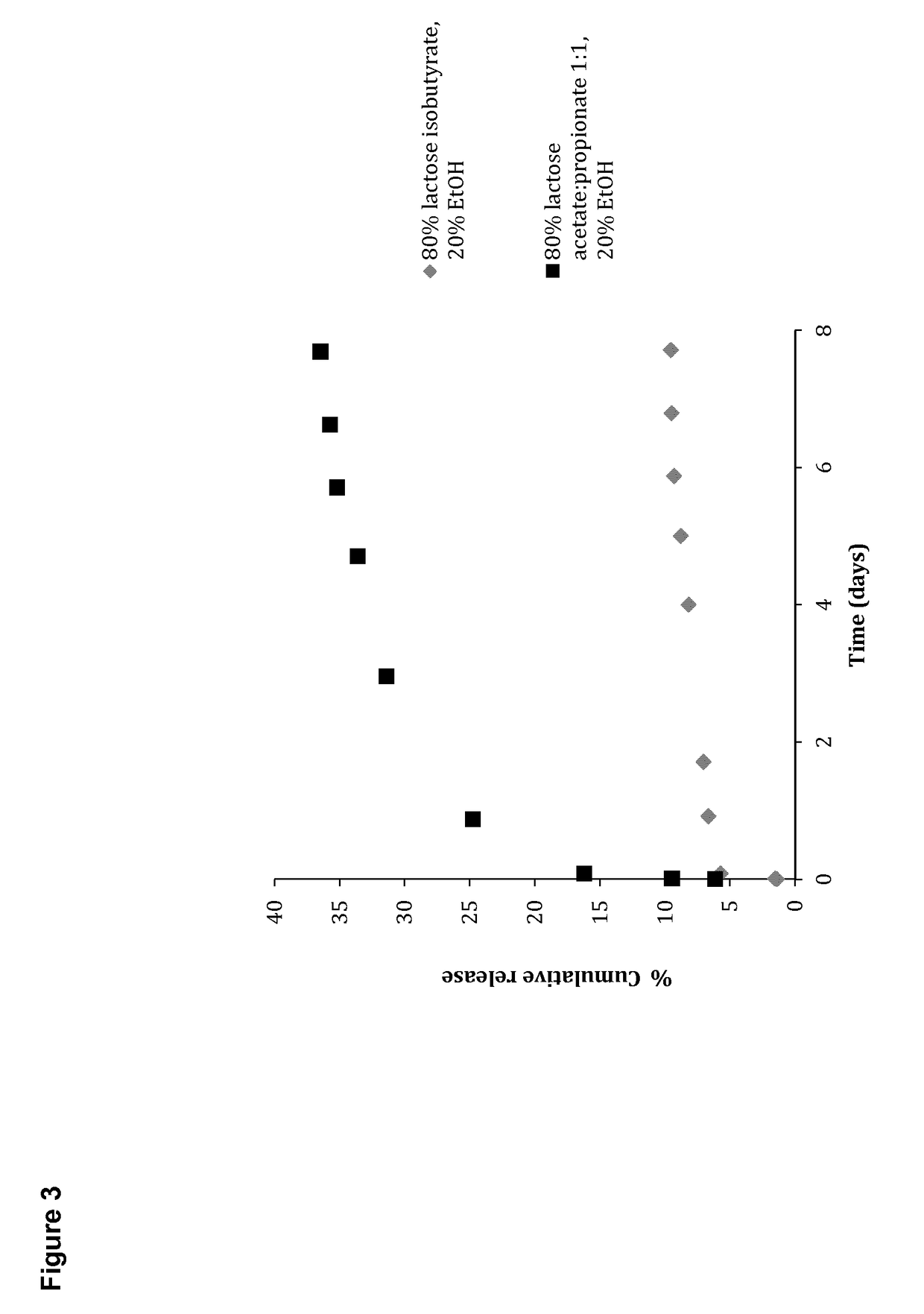Gel formulations for local drug release
a technology of local drug release and gel formulation, which is applied in the direction of drug composition, aerosol delivery, immunological disorders, etc., can solve the problems of invasive installation of solid markers, tumors and other tissue moving significantly and unpredictably during radiation, and radiotherapy is only able to provide local control of primary tumors
- Summary
- Abstract
- Description
- Claims
- Application Information
AI Technical Summary
Benefits of technology
Problems solved by technology
Method used
Image
Examples
example i
Synthesis
[0278]General experimental conditions: All reactions were carried out under inert atmosphere (N2). Water sensitive liquids and solutions were transferred via syringe. Water used for washing of the syntheses was in all cases pure MiliQ water. Organic solutions were concentrated by rotary evaporation at 30-60° C. under 200-0 millibar. Thin layer chromatography (TLC) was carried out using aluminium sheets pre-coated with silica 60F (Merck 5554). The TLC plates were inspected under UV light or developed using a cerium ammonium sulphate solution (1% cerium(IV)sulphate and 2.5% hexa-ammonium molybdate in a 10% sulfuric acid solution).
[0279]Reagents: Chemicals were all purchased from Sigma Aldrich and were used as received. Dry pyridine was obtained by drying over sieves (4 Å) for 2-3 days prior to use.
[0280]Instrumentation: Nuclear Magnetic Resonance (NMR) was conducted on a Bruker Ascend™ 400 MHz—operating at 401.3 MHz for 1 H and 100.62 MHz for 13C— with a 5 mm H-Broadband Dual...
example ii
Gel Formation
[0319]The gel-forming properties of the synthesized esters containing only small percentages of organic solvents and / or triglycerides were inspected in the following experiments
Gels Formulated with EtOH:
[0320]—210 mg of the following sugar ester formulations: α,β Lactose octaacetate: α,β Lactose octaisobutyrate 5:1, α,β Lactose octaacetate: α,β Lactose octaisobutyrate 2:1, α,β Lactose octaacetate: α,β Lactose octaisobutyrate 1:1, α,β Lactose octaacetate: α,β Lactose octapropionate 1:1, α,β Lactose octaacetate: α,β Lactose octapropionate 1:5, α,β Lactose octaacetate: α,β Lactose octapropionate 1:3, α,β Lactose octapropionate: α,β Lactose octaisobutyrate 1:1, α,β Lactose octaacetate: α,β Lactose octaisobutyrate 1:5 , α,β Lactose octapropionate, α,β Lactose octaisobutyrate: α,β Lactose octaacetate 0.5:0.5:5, α,β Lactose octaisobutyrate: α,β Lactose octaacetate 3:1, Trehalose octaacetate:Trehalose octapropionate 1:1, Trehalose octapropionate, Trehalose octaisobutyrate, Raff...
example iii
In Vitro Release of Fluorophores
[0323]The different carbohydrate esters synthesized as described in Example I, were used hereafter in the release experiments. All other chemicals used in the experiments were purchased from CCS Healthcare (absolute ethanol) and Sigma Aldrich (other chemicals) and were used as received from the manufacturer.
[0324]General experimental conditions: In vitro release kinetics of different compounds from carbohydrate ester formulations were examined after injection of small droplets of 75-80% gel forming carbohydrate, and 20% non-toxic water miscible solvent through 21-25 G hyperdermic needles into PBS buffer (2 mL). The experiments were kept at 37° C. and small aliquots of PBS (10 μL) were removed at specific time intervals and replaced with fresh buffer. The amount of released fluorophore was determined by UV-vis spectroscopy on a Thermo Scientific Nano Drop 2000 C spectrophotometer using standard curves with known concentrations.
Fluorophore: Isoniazide
[0...
PUM
| Property | Measurement | Unit |
|---|---|---|
| Fraction | aaaaa | aaaaa |
| Viscosity | aaaaa | aaaaa |
| Dynamic viscosity | aaaaa | aaaaa |
Abstract
Description
Claims
Application Information
 Login to View More
Login to View More - R&D
- Intellectual Property
- Life Sciences
- Materials
- Tech Scout
- Unparalleled Data Quality
- Higher Quality Content
- 60% Fewer Hallucinations
Browse by: Latest US Patents, China's latest patents, Technical Efficacy Thesaurus, Application Domain, Technology Topic, Popular Technical Reports.
© 2025 PatSnap. All rights reserved.Legal|Privacy policy|Modern Slavery Act Transparency Statement|Sitemap|About US| Contact US: help@patsnap.com



